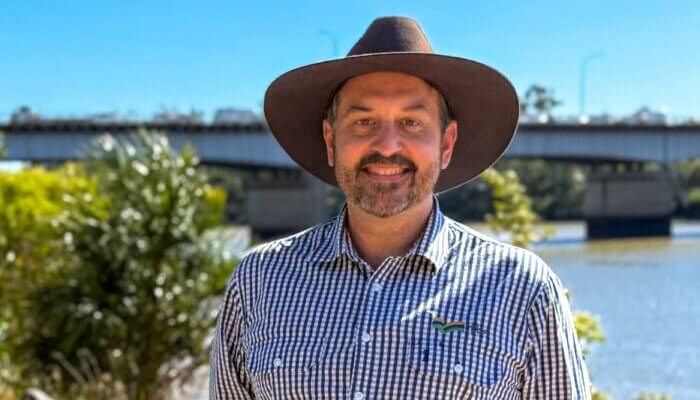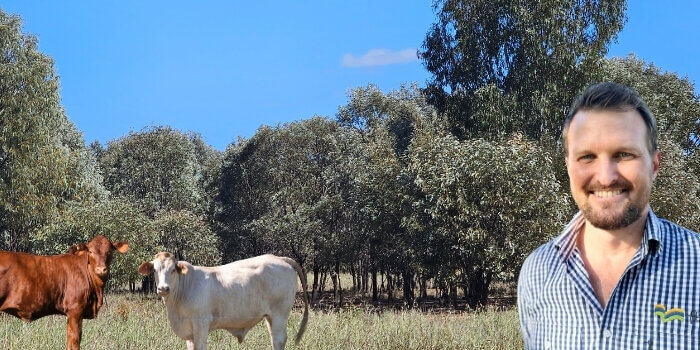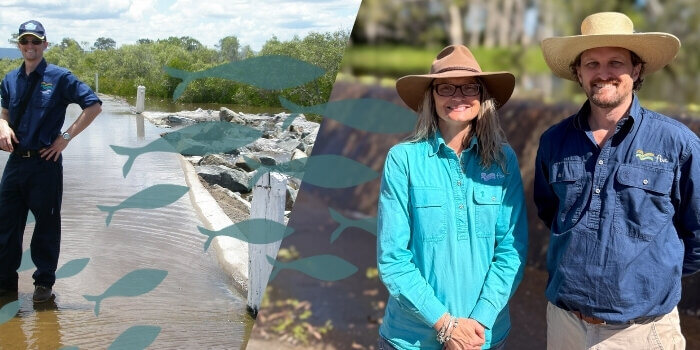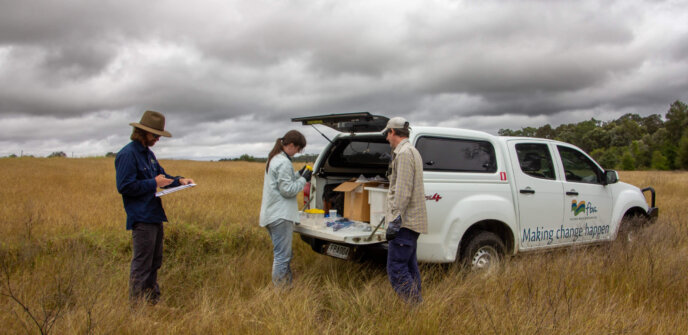
Unlocking the Secrets of Brigalow
Posted on June 16th, 2025
How tiny traces of DNA are helping save a snake you’ve probably never heard of.
What if you could know exactly which animals had passed through a patch of land without seeing a single footprint, scale or feather? Thanks to a remarkable scientific tool called environmental DNA (eDNA), that future is almost here. And in the Brigalow belt of central Queensland, with FBA at the forefront, this science is being used for the first time to change the way we protect some of Australia’s most cryptic wildlife.
One of those creatures is the Ornamental Snake (Denisonia maculata), a rarely seen, frog-eating reptile that spends much of the year hidden beneath logs or in cracks in the soil. Despite its small size of around 50cm long when fully grown, this little snake plays a vital role in the region’s ecosystem. And like the Brigalow forests it depends on, it’s quietly slipping away.
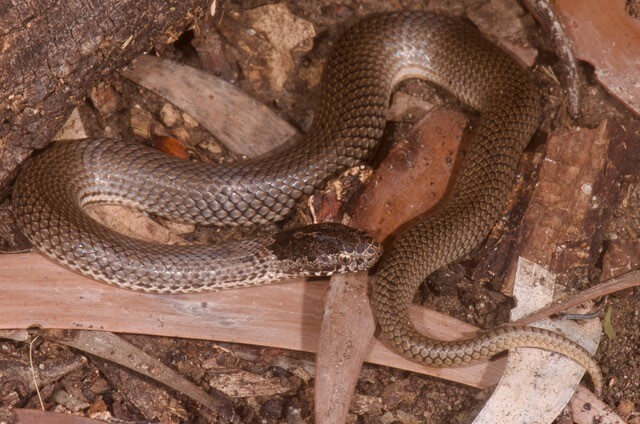
Now, a groundbreaking project is shining a spotlight on both the snake and its vanishing habitat using a method that feels more like science fiction than science fact.
In a bold new initiative, FBA has worked with TropWATER, James Cook University’s Centre for Tropical Water and Aquatic Ecosystem Research, to sequence the species DNA, and used eDNA methodology to track the presence of the Ornamental Snake in central Queensland Brigalow. It’s part of a larger project aimed at restoring this threatened ecosystem by tackling key threats like wildfires, invasive pests, livestock disturbance, and habitat degradation.
Environmental DNA (eDNA) is DNA that is shed into the environment when animals pass through it. While eDNA sampling offers invaluable insights into species presence and population dynamics, identification requires prior sequencing of the target species’ genetic profile. FBA achieved a groundbreaking milestone by starting the first-ever formal sequencing of this endangered species’ DNA, enabling future eDNA-based monitoring and conservation efforts.
The project isn’t just about science though, it’s about action. Working with First Nations and land managers, FBA is implementing practical strategies to protect and enhance Brigalow landscapes.
Work includes:
› Controlling feral animals and managing stock access
› Restoring critical habitat features like coarse woody debris and gilgais
› Reintroducing fire regimes that mimic natural cycles
› Filling key knowledge gaps through large-scale modelling and research.
By combining high-tech monitoring tools like eDNA with hands-on land management, the project is creating a blueprint for how to restore threatened ecosystems in working landscapes.
FBA Environment Coordinator, Mac Hansler and FBA Project Officer Mietta Morris have been at the front line of this project working with Stewart Macdonald, an ecologist from Cambrian Ecology, to get this crucial information to the lab at TropWATER.
Mac, Mietta and Stewart spent the best part of a week collecting water and soil samples from properties in the Nebo area with Brigalow present. These samples have been sent to TropWATER for them to determine whether the snakes have been active on these properties.
Unfortunately, this data collection trip had to be postponed due to wet weather multiple times, so they were late into the snakes’ active season and no snakes were physically spotted on the trip. However, this doesn’t mean that they aren’t there, the team spotted plenty of frogs that are a food source for the snakes and good habitat. The data will confirm if they are on these properties once it has been analysed.
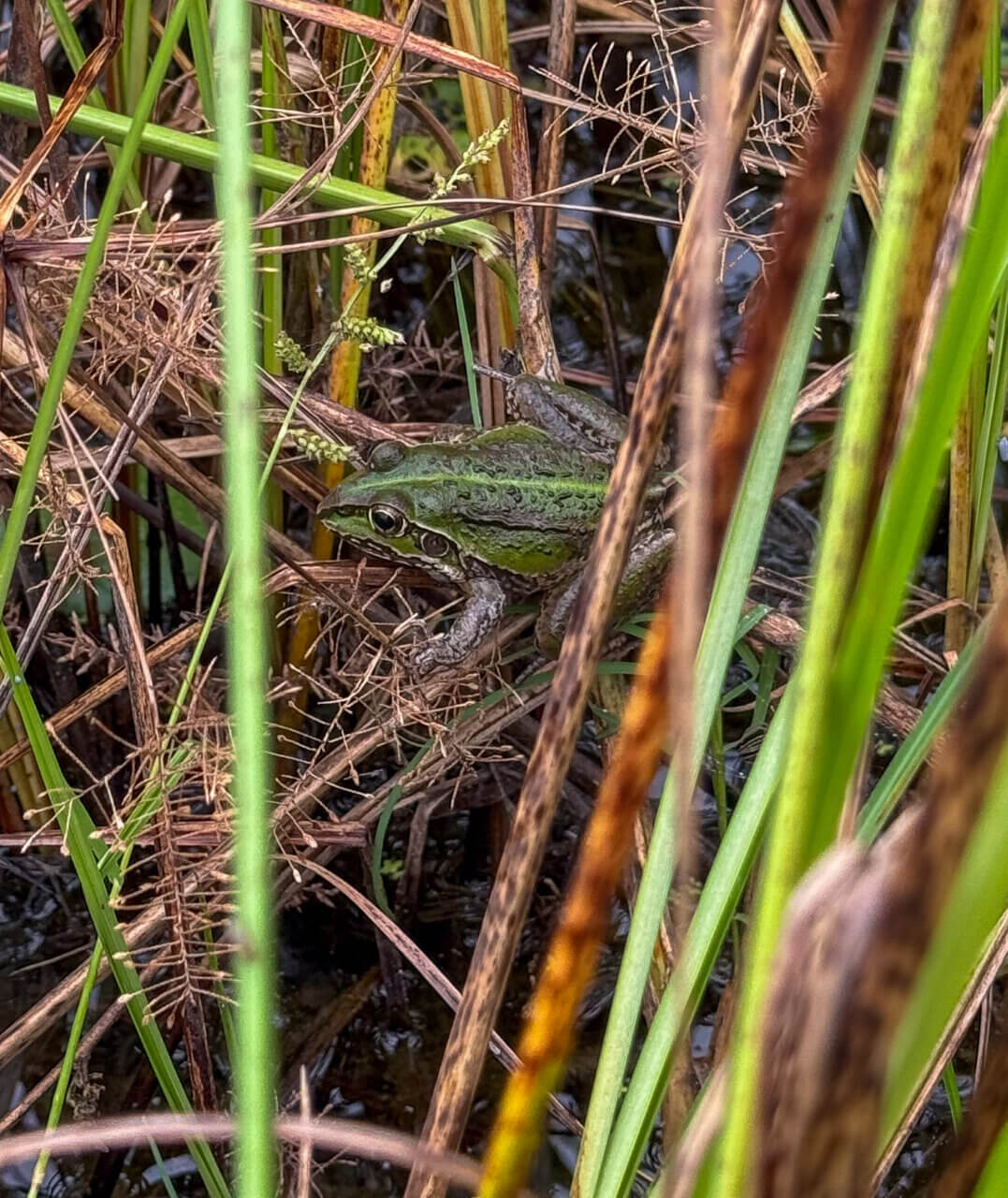
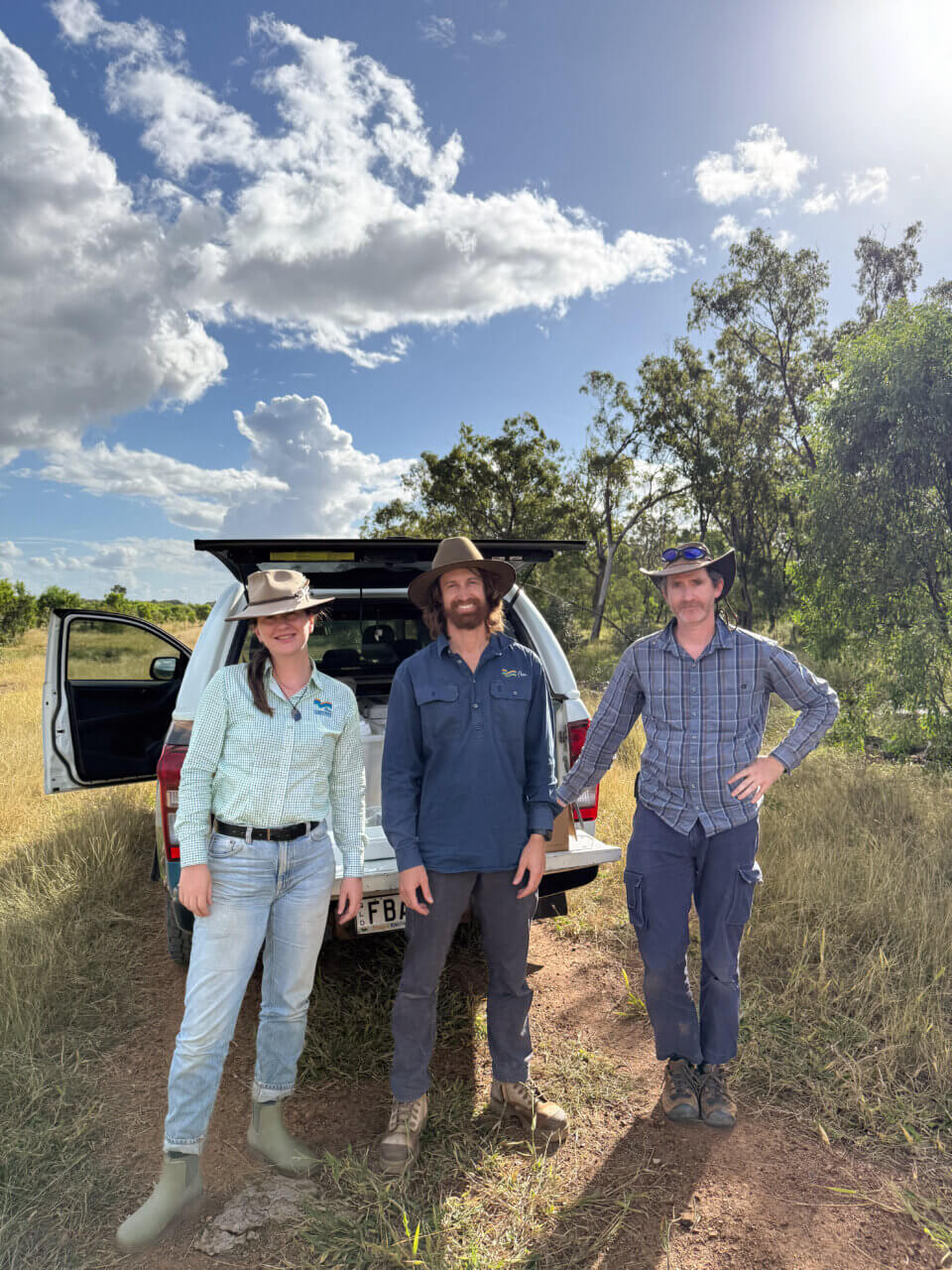
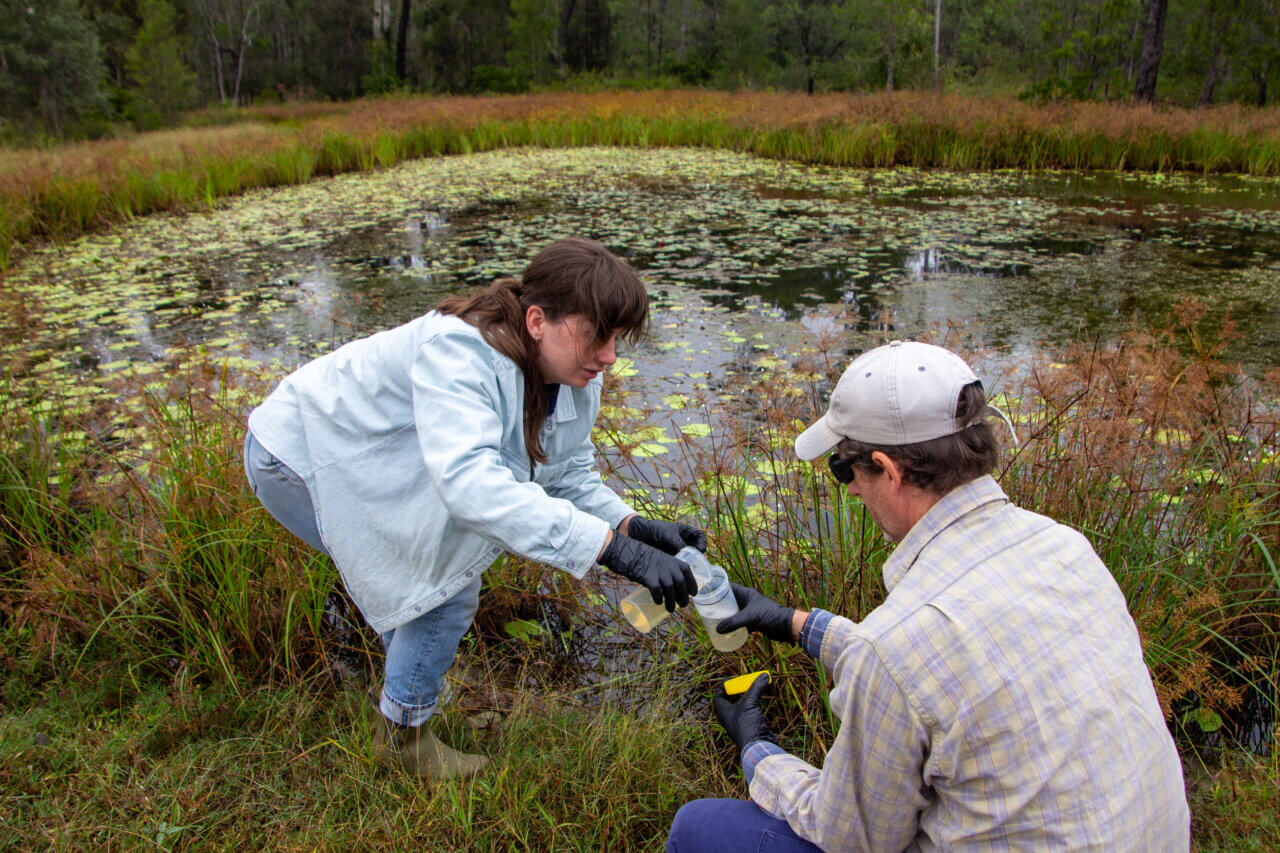
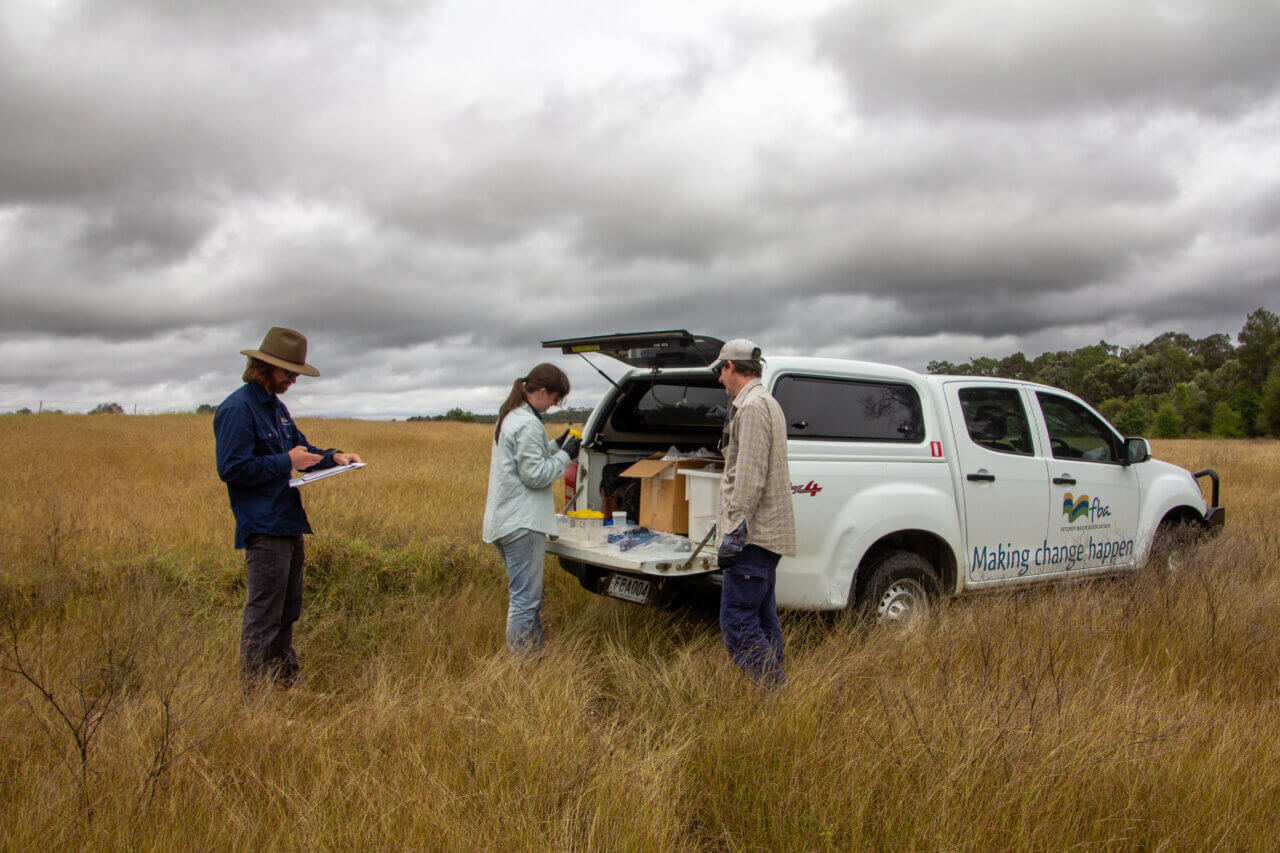
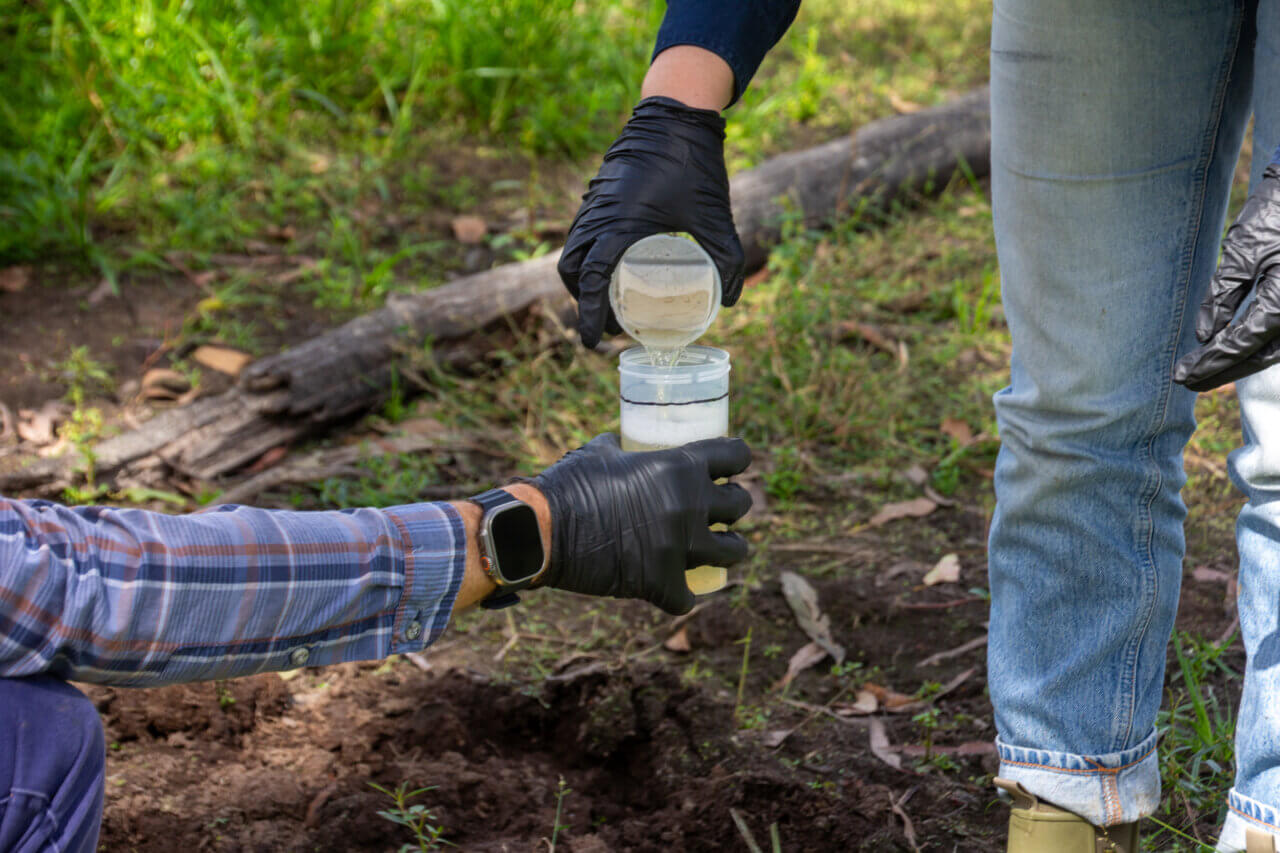
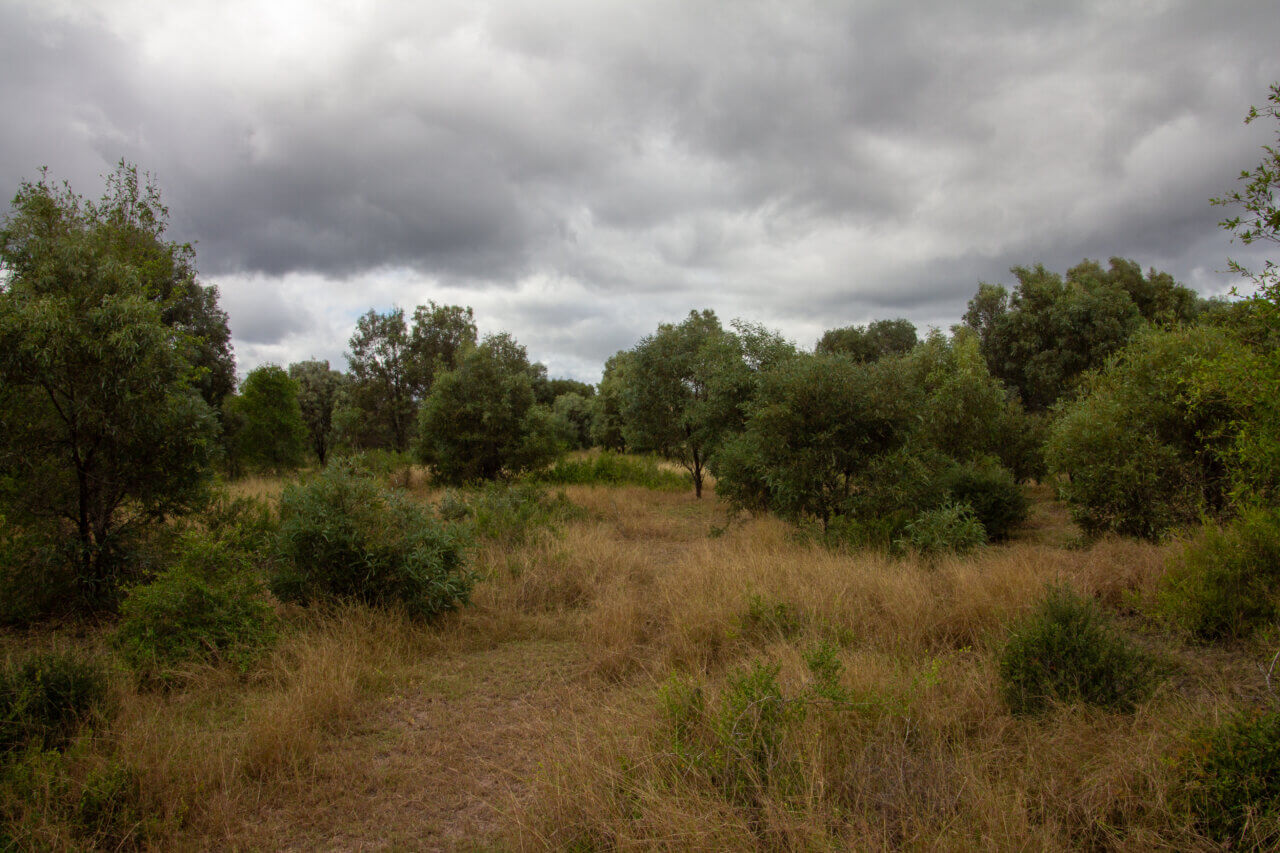
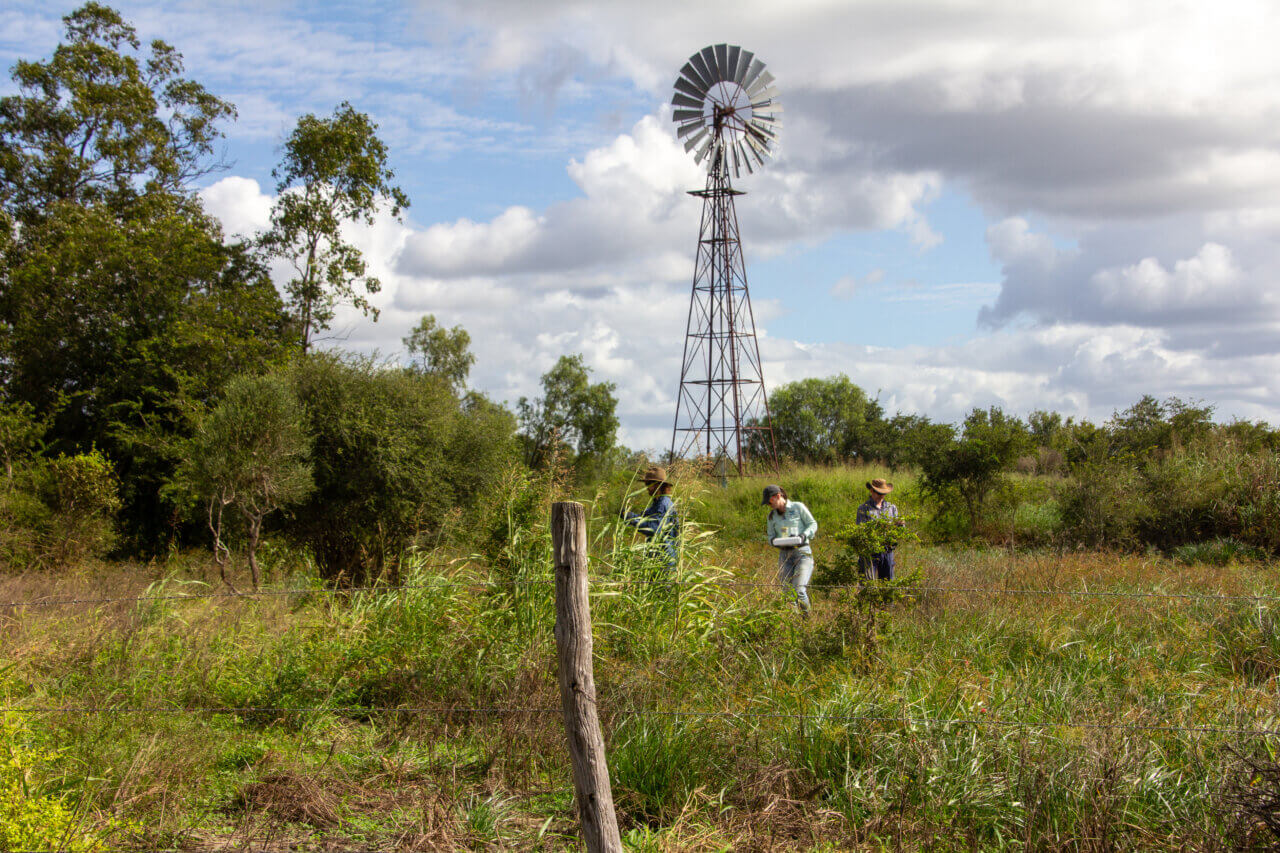
“Working to protect endangered species in brigalow country isn’t just about saving that specific species. It’s about preserving one of Australia’s most unique ecosystems. Each species plays a vital role in maintaining the health and balance of the landscape. When we protect individual species like the Ornamental snake, we safeguard the intricate web of life they support and ensure the resilience of the entire ecosystem. eDNA will help us protect more species as the use of the technology expands,” Mac said.
“All of the early work with eDNA was done on aquatic species. Working with reptiles is more of a challenge as it is a new field, it’s currently a matter of trying it and refining the technique over time,” Stewart said.
“From previous work, we know the method works from a theoretical perspective, but this trip will confirm if it works from a practical perspective.”
FBA Project Officer, Mietta described the project as such a unique and exciting opportunity to be a part of
the building blocks of what could be an amazing breakthrough in the threatened species space.
“They’re such a cryptic species but it’s important we look after them the way we try to learn about and look after other animals that might be more cute and fuzzy,” she said
Updates on this incredible project will be shared on FBA’s social media accounts and on our website. Stay
tuned to see what secrets of the Brigalow this work will unveil.
This project is funded by the Australian Government Natural Heritage Trust and delivered by Fitzroy Basin Association, a member of the Commonwealth Regional Delivery Partners Panel.







